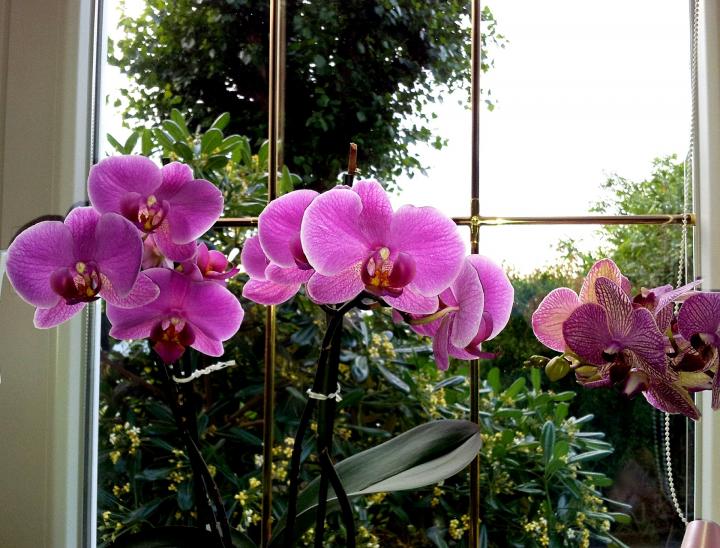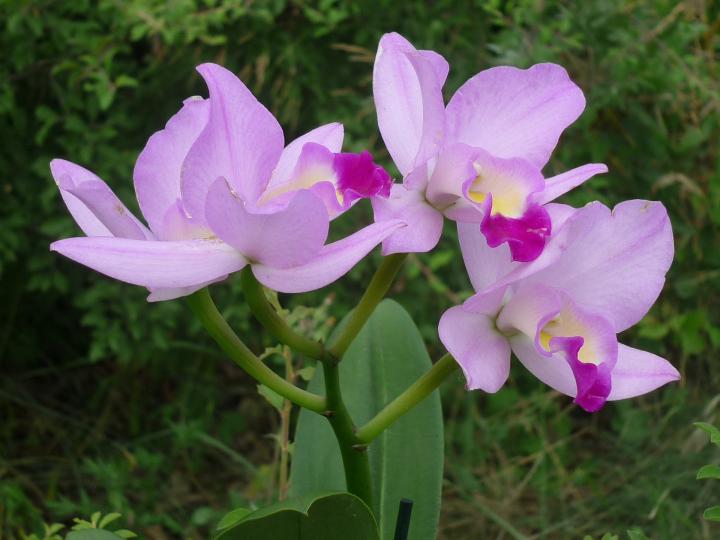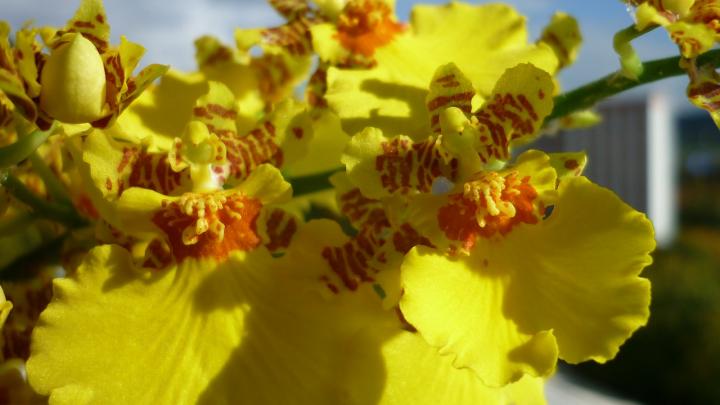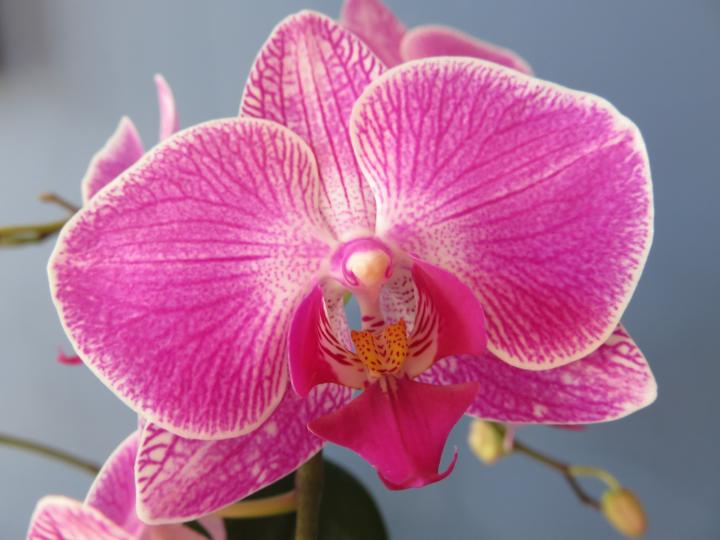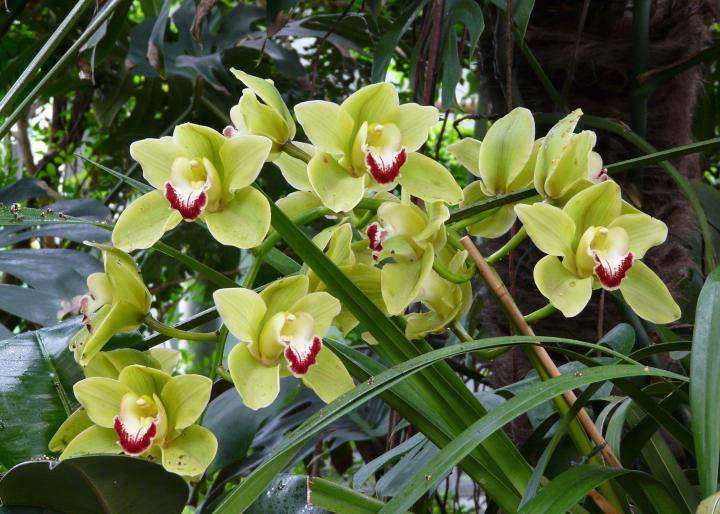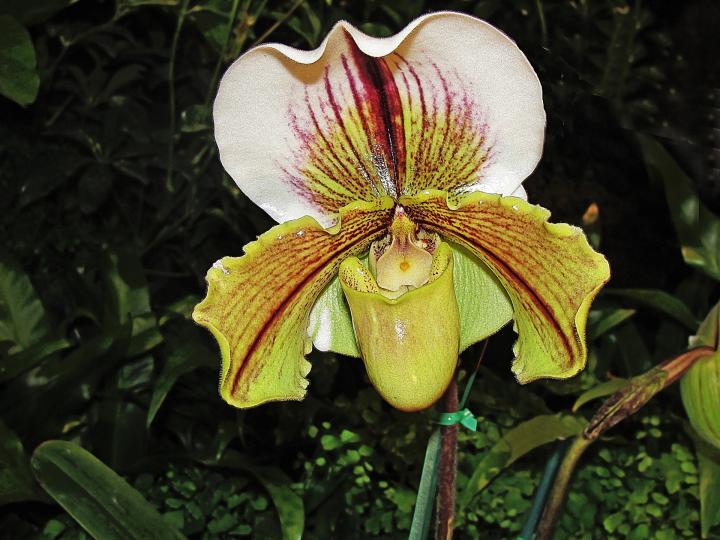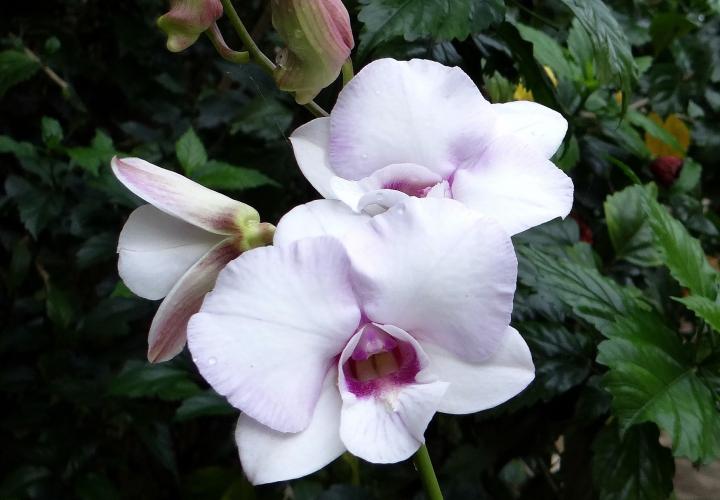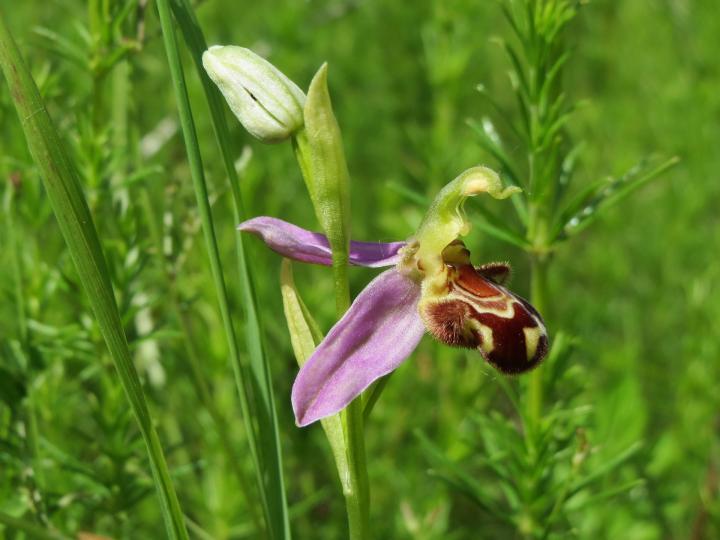
Also receive the Almanac Daily newsletter including gardening tips, weather, astronomical events, and more.
Growing Orchid Flowers: Watering, Lighting, Repotting, and More
ADVERTISEMENT
My daughter give me a Phalaenopsis, I believe -store bought, for mother's day. The two bottom leaves look cracked, brown line, straight up the center, what needs to be done? Thank you in advance.
I am a first time orchid owner. It bloomed beautifully and it has seemed very healthy until recently. It is in an organic bark medium, the pot is ceramic with air holes all around and I only water it once a week with a shot glass of water. There are two new leaves growing and they seemed to be doing very well; however, the one old leaf turned yellow and fell off and just this week the other original leaf fell off. Today I looked at the two new leaves and they seem soft and limp almost like the plant is falling off it's roots. What do you recommend?
That's way too little water for any plant. When articles say a plant doesn't like to have wet feet, or that you shouldn't overwater, that's actually referring to frequency rather than amount. Each plant has its own requirements in terms of how dry the soil should be before you re-water (and if you want to keep them alive, you NEED to do research), but in almost all cases, what you want to do is thoroughly saturate the soil/planting medium every time you water. Make sure your pot has good drainage, so no standing water will remain in the bottom, and then keep watering until the pot feels heavy (I'd say "until water runs out the bottom," but that's really not an accurate measurement as sometimes, the water will run out immediately yet the soil's still dry). For mooooost plants, you don't water again until you can stick your finger down about an inch into the soil and it all feels dry. DO NOT put it on a timed schedule, because sometimes the soil stays wet longer, and sometimes it dries out faster! You really need to be hands-on in this hobby!
Summary:
1) Use pot with good drainage, and completely saturate soil.
2) Get a feel for how your pots feel when dried out vs saturated: that'll help you know if the soil has soaked up water.
3) Research your individual plant, but generally do not water again until top inch of soil is dried out. For orchid bark/moss, a clear pot works best to see if everything looks dried out.
Hi Karen,
There are a number of reasons why orchid leaves will turn yellow, including too much direct light, too little light, temperature stress, and improper watering. In your case, it sounds as though your orchid is receiving too little water, which is causing the leaves to yellow and soften.
Without access to enough water, orchids can not absorb the vital nutrients it needs to stay happy and healthy. A shot glass worth of water once a week appears to be too little for its needs.
You can give your orchid a thorough watering. Hold the pot under a running faucet, using lukewarm (tepid) water, until water runs out of the drainage holes at the bottom. This will thoroughly moisten the potting medium. Then wait for the growing medium to dry before watering it again. The rule of thumb is to water once a week in winter.
It may take a few days for your orchid to perk up from its dehydrated state, so keep an eye on it and check the medium often to make sure it is not drying out too much between waterings.
I have a new phalenopsis and the inner clear plastic pot fits very tightly inside the decorative outer pot. Should there be more room between the 2 pots to let air circulate around the roots or will more room cause the plant to dry out?
Is the inner plastic pot solid plastic or does it have holes for air flow? If it’s the latter, then it would be good to allow for the roots to “breath” by giving them a bit more space. Phalaenopsis orchids are epiphytes, which means that they grow on tree branches, cliff faces, logs, or other structures—anywhere that isn’t directly in the dirt. This means that they prefer to have a bit of air flow around their roots. They are “aerial roots,” after all! It does mean that the roots will dry out more quickly, but this is actually preferable!
Thank you! The inner pot has slots and holes. I'll get a lager outer pot.
Hi I have a orchid and i noticed i have little black flying bugs what do i do to get rid of them Thank you
It sounds like you may be dealing with fungus gnats. They are mainly just an annoyance, as long as they aren’t present in large numbers. Read our Fungus Gnats Pest Guide for tips for dealing with them.
I have one orchid that the leaves look wrinkled, they are not smooth. What would cause this wrinkling? They are in a south/west window which gets plenty of indirect light. The other orchids are doing good. I water once a week by soaking the pots then draining off the excess. Could it be that it is not getting enough light? Thanks

